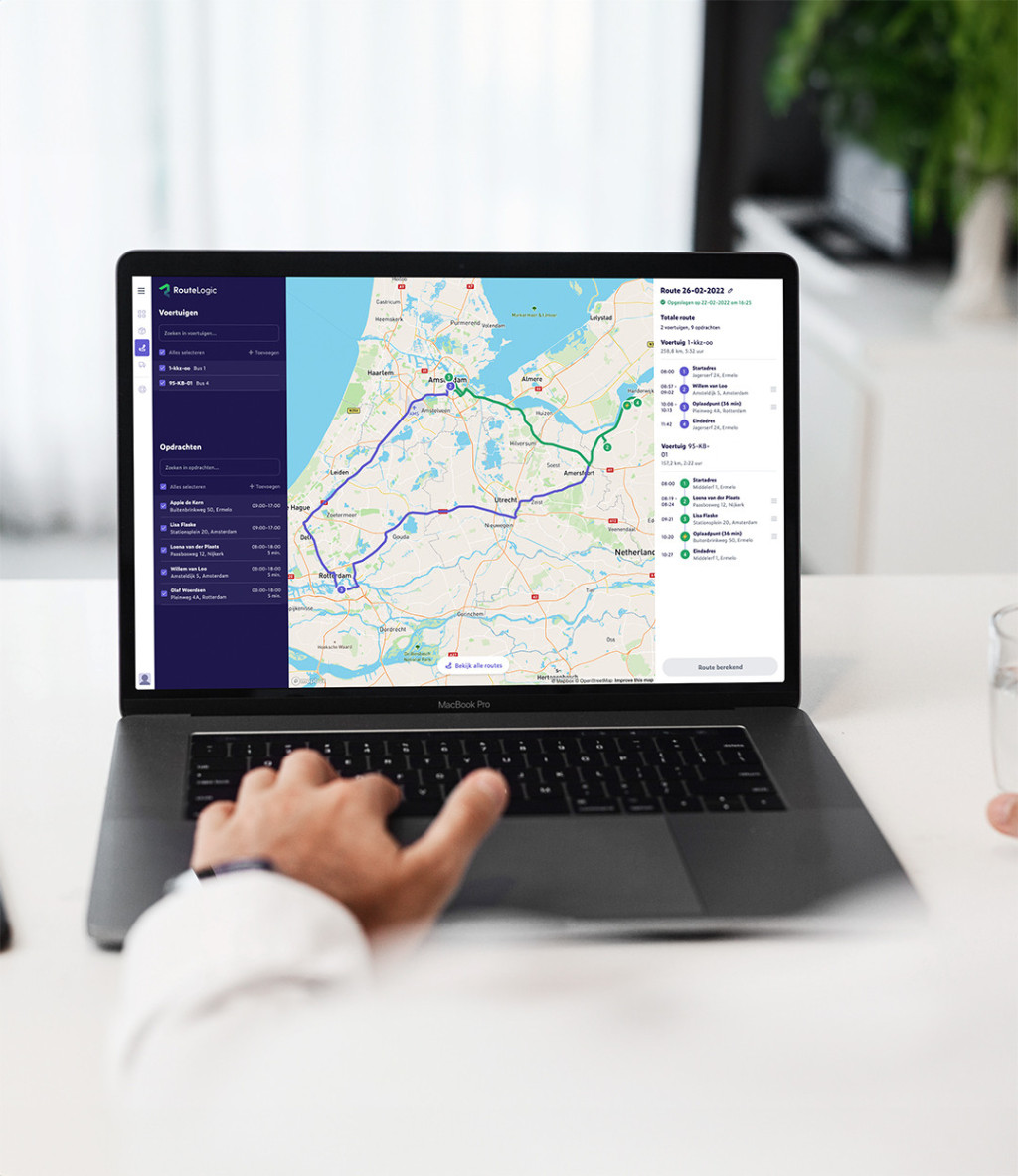Basic Elements of Route Planning
What Makes a Good Route?
A good route is not only the fastest or shortest but also one that considers safety, comfort, and efficiency. It involves evaluating alternative routes and anticipating potential obstacles.
Tools and Technologies for Route Planning
Overview of Modern Tools and Apps
Thanks to technological advancements, numerous apps and tools are available for route planning. These tools offer real-time traffic updates, alternative routes, and even integrations with calendars and events. One route planning software is RouteLogic. With RouteLogic, you save fuel, time, and money. Additionally, it reduces emissions, benefiting the environment. A route planning software that considers Range is Routelogic. RouteLogic takes into account the following factors when calculating a route:
- The number of vehicles;
- How many hours a vehicle averages per day;
- How many kilometers a vehicle averages per day;
- How many hours you spend on route planning per day;
- The hourly wage of a driver;
- The fuel price per liter.
Factors Influencing Route Choice
Traffic and Weather Conditions
Real-time traffic information and weather forecasts are crucial considerations when choosing a route. Unforeseen circumstances can cause significant delays.
Distance and Travel Time
Evaluating distance and estimated travel time helps in making realistic travel plans and prevents unpleasant surprises.
Personal Preferences and Constraints
Every traveler has unique preferences and constraints, such as the need for rest stops or the avoidance of certain roads, which should be taken into account when planning a route.
Tips for Efficient Route Planning
How to Choose and Plan the Best Route
Planning the route well in advance, considering peak hours, and having a Plan B are some of the best practices for efficient route planning.
Common Mistakes in Route Planning
What to Avoid
Some common mistakes include not scheduling rest times, ignoring weather forecasts, and relying too much on GPS without considering alternative routes.
Sustainability and Route Planning
Choosing Environmentally Friendly Routes
Choosing routes that consume less fuel or using public transportation and carpooling can have a significant impact on the environment.
Future of Route Planning
Innovations and Trends
Future trends in route planning include the use of AI to predict traffic patterns, integrated mobility apps combining various modes of transportation, and even autonomous vehicles determining the optimal route on their own. Effective route planning is more than just determining the path from point A to B; it is a strategic process that takes into account a multitude of factors. With the right tools and a good understanding of the elements influencing routes, you can enhance your travel experience, save time, and contribute to a more sustainable future. With ongoing technological advancements, route planning is becoming increasingly sophisticated, making it an essential part of both daily commutes and special adventures.



